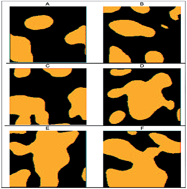Composite membranes derived from immiscible NBR/SBR blends and amphiphilic montmorillonites: permeability evaluation of these membranes for benzene and toluene in their binary mixtures
Abstract
The present work deals with the study of separability potential of novel composite membranes derived from acrylonitrile butadiene rubber (NBR)/styrene butadiene rubber (SBR) immiscible blends after inducing compatibilization. The compatibilization step was achieved after the inclusion of montmorillonite fillers with a wide range of amphiphilic character. The montmorillonites can be arranged in an ascending sequence according to the increase in their organophilicity: Mont-0 < Mont-25 < Mont-50 < Mont-75 < Mont-100. Field emission scanning electron microscopy (FESEM) and dynamic mechanical thermal analysis (DMTA) confirmed various altitudes of miscibility accomplished via improved co-interpenetration, yielding co-continuous morphological states. The sorption affinity of the membranes towards volatile organic components (VOC) such as toluene and benzene showed higher preference for toluene. The preference difference changes considerably with the composition of the membrane in the sense of the inserted clay organophilicity. This suggests possible use of such membranes for the separation of a binary mixture of benzene–toluene (50/50) as a model, which may be also of industrial importance. The enrichment potential showed superiority for Mont-25 based membrane followed by the rest of the membranes in the order: Mont-50 > Mont-75 > Mont-100. The results may be simply explained considering the compatibilization process entitles different morphological states as a function of the clay organophilicity, which was additionally evidenced by recording the changes in the corresponding glass transition temperatures (Tg) of the blend components using differential scanning calorimetry (DSC). The results could also be correlated with the associated differences in the network characteristics: e.g., crosslinking density and molecular weight between two crosslinks.


 Please wait while we load your content...
Please wait while we load your content...